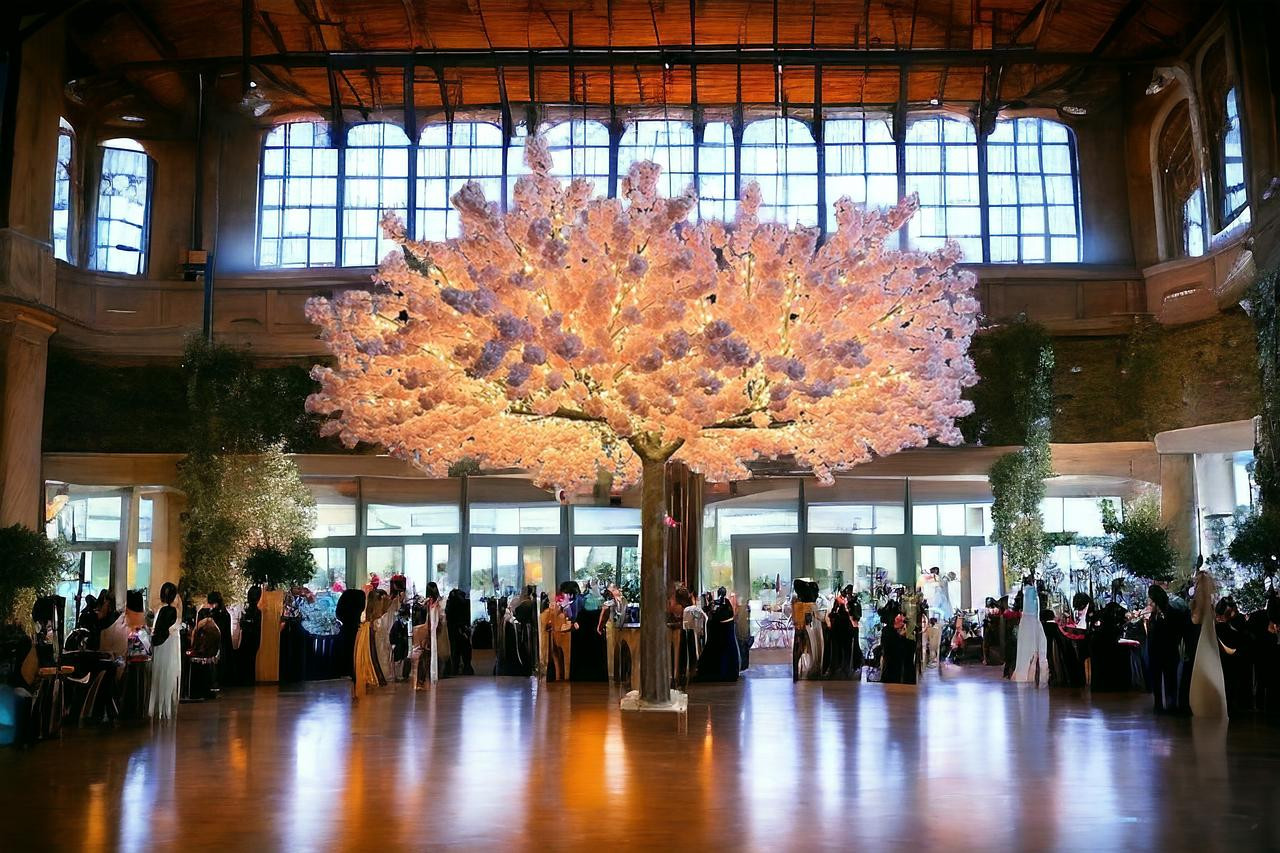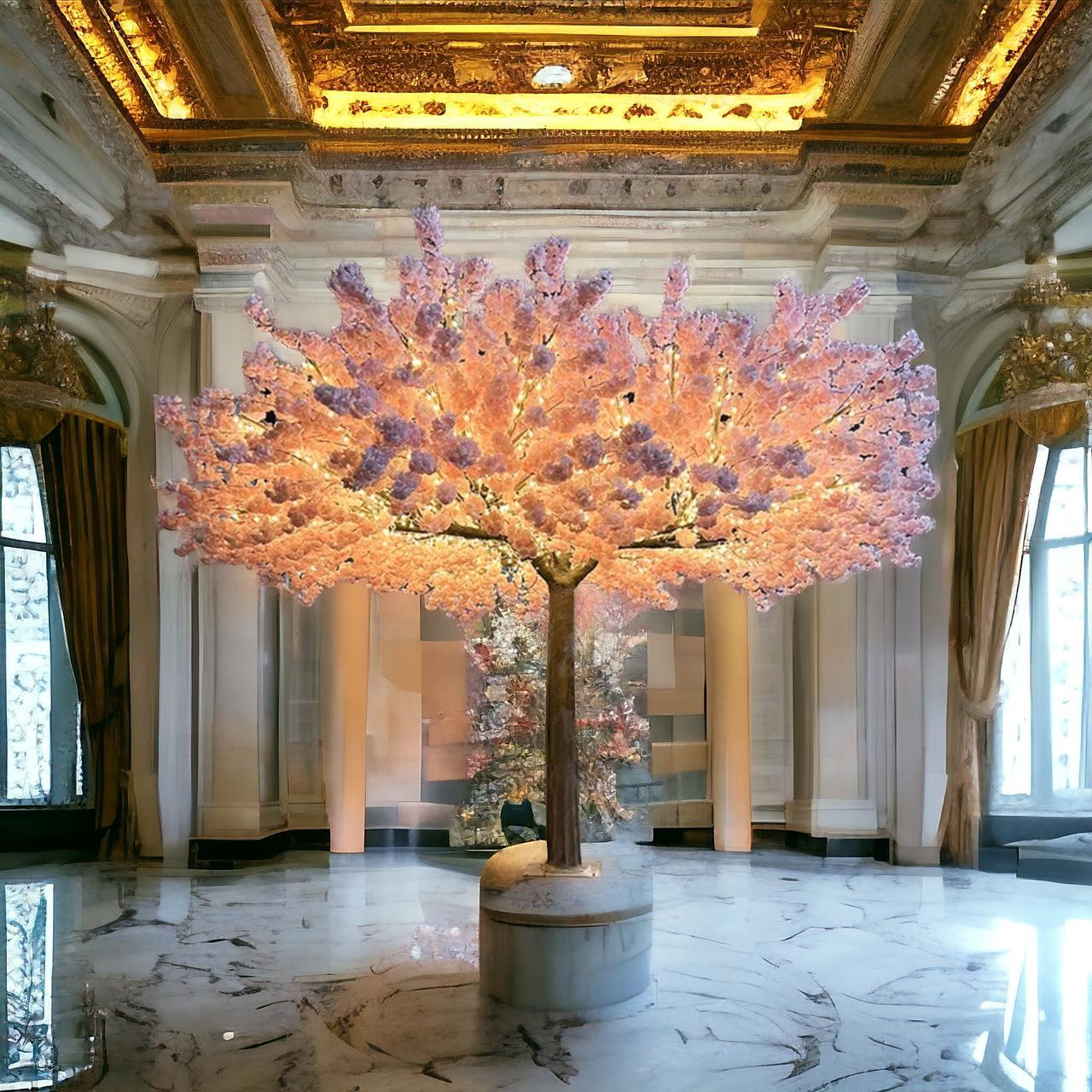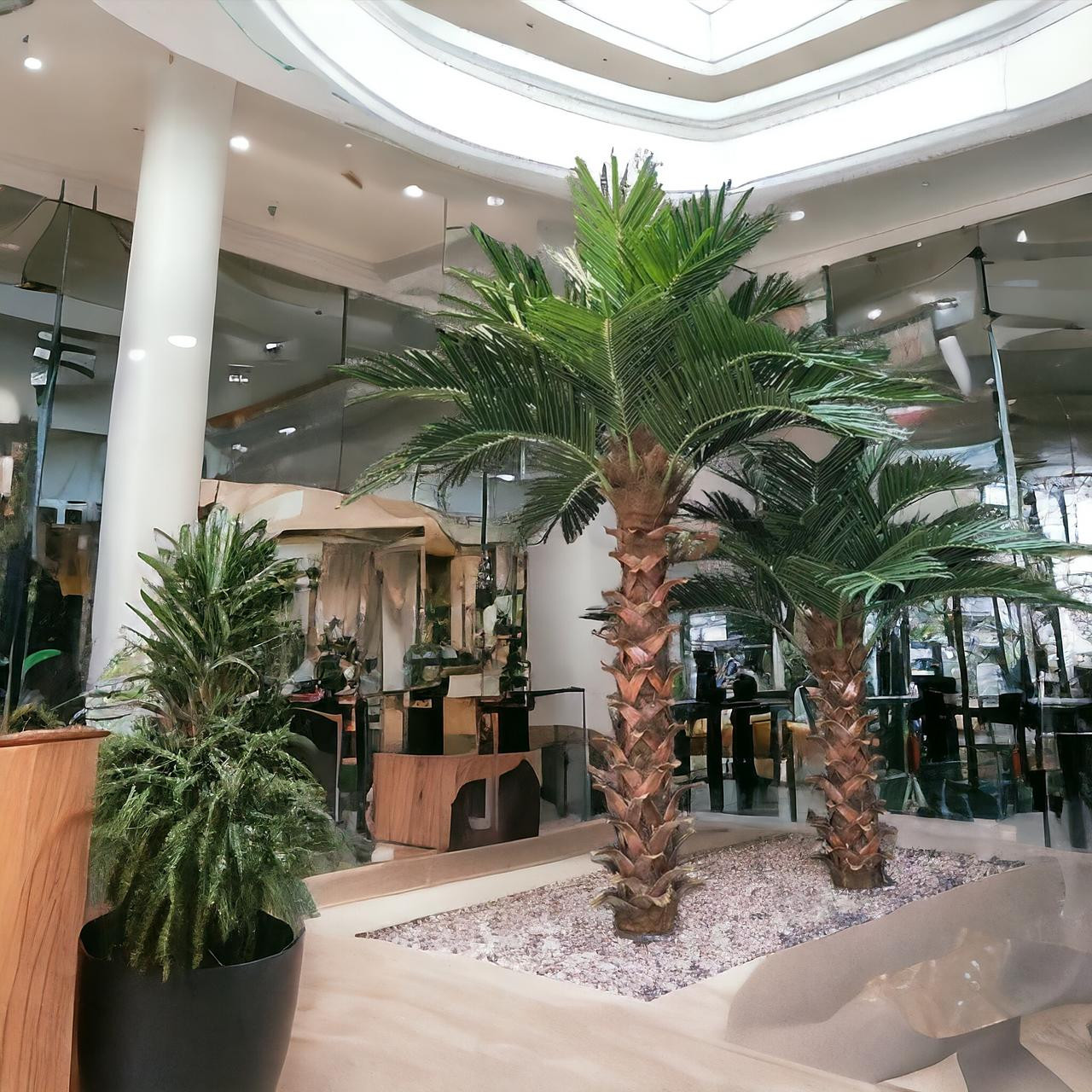How Artificial Trees Enhance the Aesthetics of Interiors When Designing Restaurants and Hotels
11th Aug 2024
How Artificial Trees Enhance the Aesthetics of Interiors When Designing Restaurants and Hotels
By Melissa Kissenger, Senior B2B Interior Designer rep at Jas Boutique
In the world of interior design, we constantly seek innovative ways to enhance the ambiance and aesthetic appeal of spaces. Whether it’s a cozy restaurant tucked away in a bustling city or a luxurious hotel that promises an unforgettable stay, every element within these environments contributes to the overall experience. One of the most effective and increasingly popular design choices in recent years has been the incorporation of artificial trees.
At Jas Boutique, where I have the privilege of leading design projects, we’ve found that artificial trees can be transformative in creating inviting, sophisticated, and memorable interiors. In this blog, I’ll explore how artificial trees can elevate the design of restaurants and hotels, creating atmospheres that resonate with guests long after they’ve left.
The Versatility of Artificial Trees in Interior Design
When designing interiors, the goal is to craft a space that not only looks beautiful but also functions harmoniously with the purpose of the environment. Artificial trees offer a unique versatility that allows them to seamlessly fit into a variety of design schemes, from modern minimalism to lush tropical escapes.
1. Bringing Nature Indoors Without the Maintenance
One of the most significant advantages of using artificial trees in interiors is their ability to bring the calming and refreshing presence of nature indoors without the maintenance requirements of live plants. In restaurants and hotels, where the environment must be consistently pristine, the upkeep of live plants can be a daunting task. Artificial trees eliminate this concern while still providing the natural aesthetic that guests love.
For instance, in a high-end hotel lobby, a towering artificial olive tree can evoke a sense of Mediterranean luxury. It offers the timeless appeal of nature without the need for watering, pruning, or ensuring the right amount of sunlight. This is particularly important in spaces where natural light is limited, such as interior corridors or dining areas deep within a building.
2. Enhancing the Atmosphere in Dining Areas
Restaurants are more than just places to eat; they are spaces where ambiance plays a critical role in the dining experience. The design of a restaurant sets the tone for the meal, influencing everything from the way food is perceived to the overall comfort of the guests.
Artificial trees can be strategically placed to create intimate dining spaces or to add a touch of greenery that softens the overall aesthetic. Imagine a cozy, dimly lit bistro with small artificial ficus trees positioned between tables, offering a sense of privacy and adding a warm, organic element to the setting. Or consider a trendy urban eatery where a row of artificial bamboo trees lines the wall, adding verticality and a natural contrast to industrial elements like concrete and metal.
The use of artificial trees in dining areas isn’t just about aesthetics—it’s about enhancing the experience. The presence of greenery, even if artificial, can make a space feel more comfortable and inviting, encouraging guests to linger longer and enjoy their meals.
3. Creating Luxurious and Welcoming Hotel Lobbies
Hotel lobbies are the first impression guests receive, and as the saying goes, you never get a second chance to make a first impression. The design of a hotel lobby must therefore be both welcoming and reflective of the hotel’s overall brand and atmosphere.
Artificial trees can play a significant role in achieving this balance. For example, in a luxury hotel that wants to convey a sense of opulence and tranquility, large artificial palm trees can be used to create a tropical oasis in the middle of the city. Paired with plush seating and warm lighting, these trees contribute to a feeling of escape and relaxation, setting the tone for the guest’s stay.
In contrast, a boutique hotel aiming for a more modern and edgy vibe might opt for artificial trees with sleek lines and minimalist forms, such as artificial birch trees with their distinctive white bark. These trees can add a sculptural element to the space, bridging the gap between nature and contemporary design.
4. Transforming Outdoor Spaces
While we often focus on the interiors of restaurants and hotels, outdoor spaces are just as crucial in creating a complete guest experience. Patios, courtyards, and rooftop terraces can all benefit from the strategic placement of artificial trees.
In climates where seasonal changes can be extreme, artificial trees are an ideal solution for maintaining a consistent look year-round. A rooftop bar, for instance, can maintain its lush, tropical vibe even in the dead of winter with the use of artificial palm trees. These trees can withstand the elements without losing their color or shape, ensuring that the space remains inviting no matter the season.
Outdoor dining areas can also be enhanced with artificial trees, creating a sense of enclosure and privacy while adding to the overall aesthetic. Artificial trees can be used to define spaces within a larger outdoor area, creating cozy nooks for dining or lounging. This not only enhances the visual appeal but also improves the functionality of the space.
The Practical Benefits of Artificial Trees
Beyond their aesthetic appeal, artificial trees offer a number of practical benefits that make them an excellent choice for interior design in restaurants and hotels.
1. Durability and Longevity
One of the primary advantages of artificial trees is their durability. Unlike live plants, which can be susceptible to disease, pests, and the effects of aging, artificial trees remain in perfect condition for years. This makes them a cost-effective choice in the long run, as they do not need to be replaced frequently.
Moreover, artificial trees can be designed to withstand various environmental conditions. Whether placed in a sun-drenched lobby or a shaded dining area, they will maintain their appearance without the need for special care.
2. Allergy-Free and Safe
In spaces where guests from all walks of life come together, it’s important to consider the potential for allergies. Live plants, particularly those that flower, can trigger allergic reactions in some individuals. Artificial trees, on the other hand, are completely hypoallergenic, making them a safe choice for public spaces.
Additionally, artificial trees eliminate the need for soil, water, and fertilizers, reducing the risk of mold, pests, and other issues that can arise with live plants. This is particularly important in restaurants, where food safety and cleanliness are paramount.
3. Customization and Design Flexibility
One of the most exciting aspects of working with artificial trees is the level of customization they offer. Unlike live trees, which are limited by their natural growth patterns, artificial trees can be designed to fit the exact specifications of a space.
At Jas Boutique, we often collaborate with manufacturers to create custom artificial trees that perfectly match the vision for a project. Whether it’s a specific height, shape, or color, artificial trees can be tailored to meet the unique needs of a design. This flexibility allows us to create spaces that are truly one-of-a-kind, with every detail carefully considered.
4. Eco-Friendly Options
While the idea of using artificial trees might seem at odds with environmental sustainability, there are actually eco-friendly options available. Many manufacturers now offer artificial trees made from recycled or sustainable materials, reducing the environmental impact of their production.
Additionally, the long lifespan of artificial trees means that they don’t need to be replaced as frequently as live plants, further reducing their environmental footprint. For eco-conscious hotels and restaurants, choosing artificial trees made from sustainable materials can be a responsible and stylish choice.
Case Studies: Artificial Trees in Action
To illustrate the transformative power of artificial trees in interior design, let’s take a look at a few case studies from our work at Jas Boutique.
1. The Urban Oasis: A Modern Hotel Lobby
In a recent project, we were tasked with redesigning the lobby of a modern hotel located in the heart of a bustling city. The hotel’s brand was centered around the concept of an urban oasis—a place where guests could escape the chaos of the city and find tranquility.
To achieve this, we incorporated large artificial olive trees into the lobby design. These trees, with their elegant silver-green leaves, added a touch of Mediterranean charm to the space. Positioned around the seating areas, the trees created a sense of enclosure and intimacy, making the lobby feel like a serene retreat.
The use of artificial trees also allowed us to maintain the lush, green look year-round, regardless of the city’s unpredictable weather. The result was a lobby that felt both luxurious and welcoming, perfectly aligned with the hotel’s brand.
2. A Tropical Escape: Rooftop Dining
For a rooftop restaurant and bar, we wanted to create a tropical escape in the middle of an urban environment. The challenge was to maintain this lush, green aesthetic even during the colder months when live tropical plants would struggle to survive.
We opted for artificial palm trees, strategically placed around the dining and lounging areas. These trees added height and drama to the space, creating a canopy of greenery that made the rooftop feel like an exotic getaway. The durability of the artificial trees meant that the design could remain consistent throughout the year, providing guests with a memorable dining experience regardless of the season.
3. Cozy and Intimate: A Boutique Restaurant
In a small boutique restaurant, we used artificial ficus trees to create a cozy and intimate dining environment. The restaurant’s design was inspired by the concept of a secret garden, with each table surrounded by greenery to give guests a sense of privacy and seclusion.
The artificial trees were crucial to achieving this look, as they allowed us to create a dense, lush environment without the maintenance challenges of live plants. The result was a restaurant that felt both intimate and enchanting, inviting guests to relax and enjoy their meal in a unique setting.
Conclusion: The Future of Artificial Trees in Interior Design
As we continue to push the boundaries of interior design, artificial trees are becoming an increasingly valuable tool in our arsenal. They offer a unique combination of aesthetic appeal, practicality, and versatility that allows us to create spaces that are both beautiful and functional.
In restaurants and hotels, where the guest experience is paramount, artificial trees can play a key role in crafting environments that are welcoming, luxurious, and memorable. Whether used to enhance the atmosphere of a dining area, create a stunning hotel lobby, or transform an outdoor space, artificial trees offer endless possibilities for design innovation.
At Jas Boutique, we are excited to continue exploring the potential of artificial trees in our projects, pushing the boundaries of what’s possible in interior design. As we look to the future, we see artificial trees not just as a trend, but as a lasting element of design that will continue to enhance the aesthetics of interiors for years to come.





